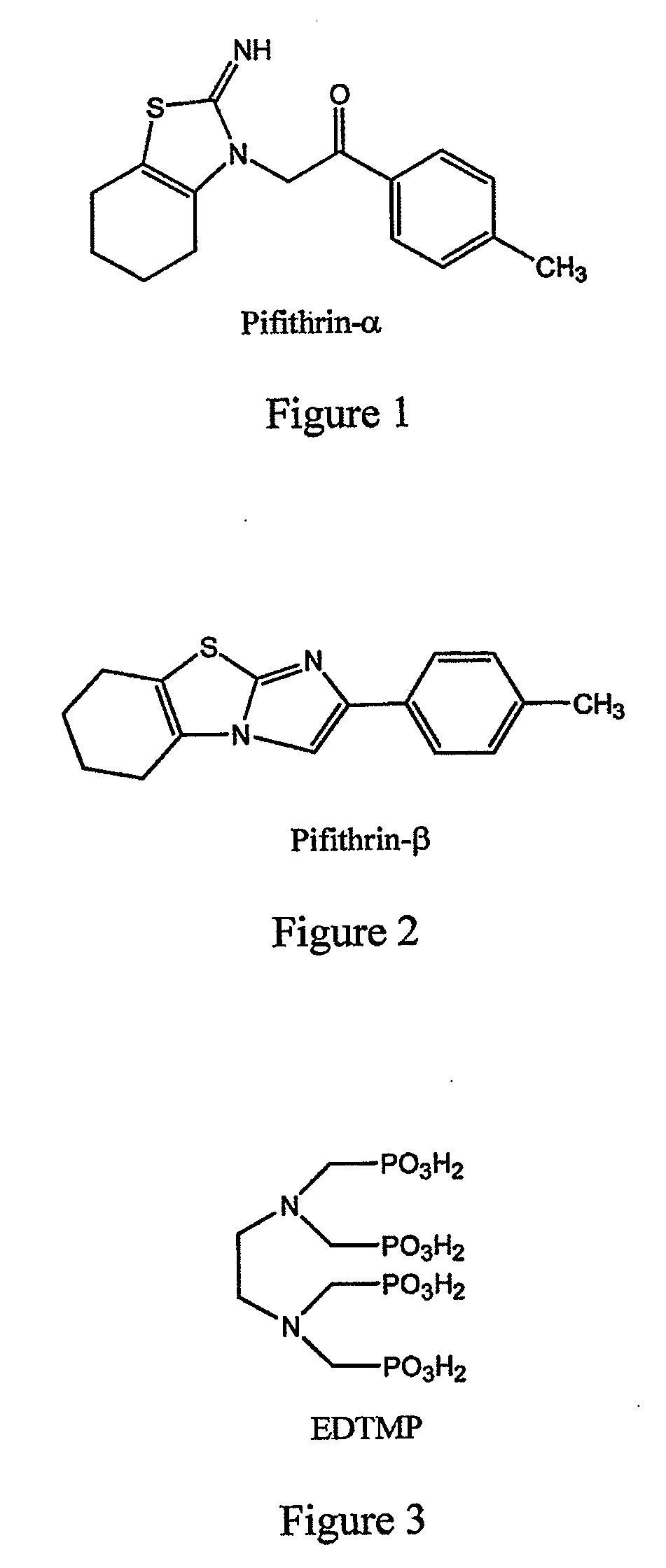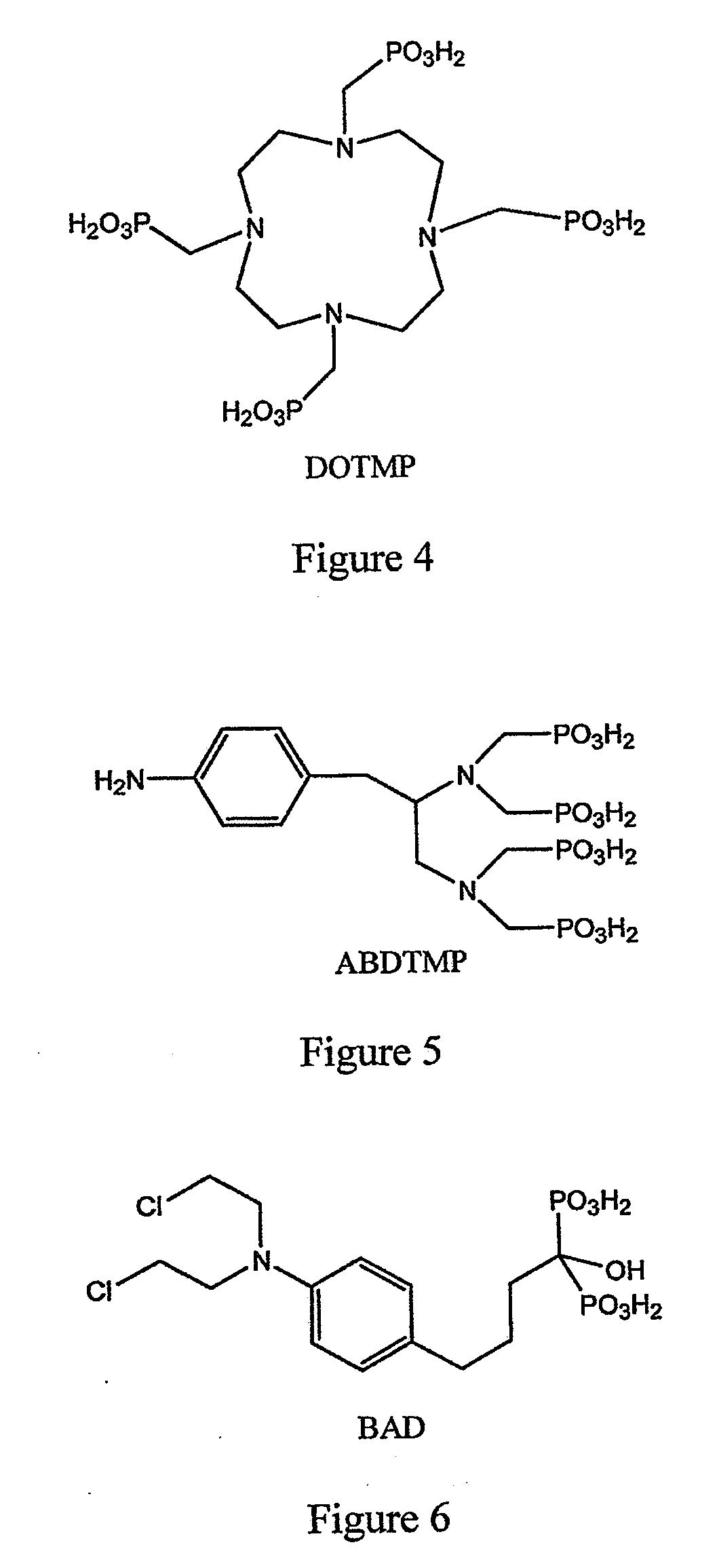Targeted bone marrow protection agents
a bone marrow and protection agent technology, applied in the direction of drug compositions, phosphorous compound active ingredients, peptide/protein ingredients, etc., can solve the problems of affecting the survival rate of p53 gene, so as to inhibit cell death and inhibit cell death.
- Summary
- Abstract
- Description
- Claims
- Application Information
AI Technical Summary
Problems solved by technology
Method used
Image
Examples
example 1
[0104]This example demonstrates a method of preparing pifithrin-α.
[0105]A multigram sample of pifithrin-α (the chemical structure of which is set forth in FIG. 1) suitable for the derivatization experiments, can be prepared according to literature methods as shown in FIG. 10 (see, for example, International Patent Application WO 00 / 44364; Tasaka et al., J. Heterocyclic Chem., 34, 1763 (1997); and Andreani et al., J. Med. Chem., 38, 1090 (1995)). Referring to FIG. 10, the 2-aminothiazole (C) is prepared from the reacting cyclohexanone (A) with thiourea (C). Then the solvent is removed, and the solid is recrystallized from hexane. This sample (C) is then dissolved with a slight excess of commercially available p-methylphenacyl bromide in toluene and then stirred for 48 hours at room temperature, at which time PFT-α precipitates out of solution as the HBr salt. PFT-α can be converted into pifithrin-β simply by refluxing in methanol for 6 hours.
example 2
[0106]This example demonstrates a method of making chemical modifications to pifithrin-α which allow for reversible covalent attachments.
[0107]With the sample prepared in accordance with Example 1, a number of different chemistries can be utilized for reaction with this particular substituted beta-ketothiazole. These different methods are shown in FIG. 11. Referring to FIG. 11, the preparation of the enol ether derivative (E) (or enol acetate, R2=acyl group) will be performed under basic conditions in the presence of an alkylating agent (or acylating agent) by known methods (Eroclspm et al., J. Org. Chem., 30, 1050 (1965)). The enol ether (and enol acetate) will then be evaluated for stability under relevant conditions. Relevant conditions for all of these conversions will be at either pH=7.4 (to simulate approximate physiological pH conditions) or pH=5 (to simulate bone resorption pH) in 50 mM sodium phosphate buffer (to simulate physiological conditions) at 37 degrees centigrade. ...
example 3
[0117]This example illustrates attachment of a cell protection factor, PFT-α, to a bone targeting agent via an acid-cleavable linker.
[0118]Preferably, the cell protection factor of the inventive compound is released from a bone targeting agent via an acid-enhanced cleavage mechanism. The acid sensitive linker ACL-3 (FIG. 6) is expected to acylate pifithrin-α (FIG. 1) on the imine NH moiety leaving the isothiocyanato group available to react with nucleophiles present on a bone-seeking moiety as shown in FIG. 15. This attachment through amines has been shown to be quite acid-sensitive (International Patent Application WO 94 / 00145). Given the facile hydrolysis of acylated imines, it can be expected that the acylated imine using ACL-3 would be even faster. This facile cleavage using the ACL-3 system is believed to occur because under acidic conditions the neighboring group effect of the ortho-carboxylate group facilitates cleavage. This chemistry is illustrated in FIG. 15. Reaction of P...
PUM
| Property | Measurement | Unit |
|---|---|---|
| pH | aaaaa | aaaaa |
| pH | aaaaa | aaaaa |
| pH | aaaaa | aaaaa |
Abstract
Description
Claims
Application Information
 Login to View More
Login to View More - R&D
- Intellectual Property
- Life Sciences
- Materials
- Tech Scout
- Unparalleled Data Quality
- Higher Quality Content
- 60% Fewer Hallucinations
Browse by: Latest US Patents, China's latest patents, Technical Efficacy Thesaurus, Application Domain, Technology Topic, Popular Technical Reports.
© 2025 PatSnap. All rights reserved.Legal|Privacy policy|Modern Slavery Act Transparency Statement|Sitemap|About US| Contact US: help@patsnap.com



